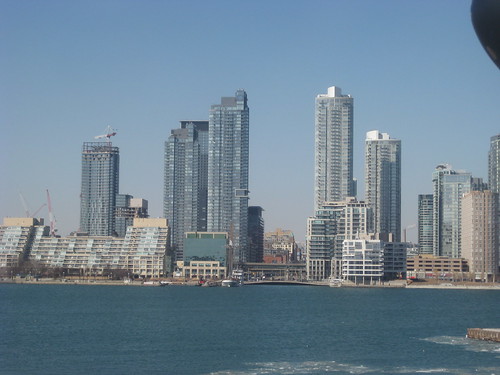Overall, the architecture was great. The planning still has some work to do. Despite its status as a very livable city, its citizens almost entirely depend on the car. The downtown population is growing, but there is still no grocery store to be found. There is a two-story Target, for what it's worth.
One of the more disappointing things I saw was the single lane-ing of Lyndale Avenue. While it is turning to a nice boulevard, this would have been the perfect opportunity to add a streetcar line from downtown leading through into the residential neighbourhoods of south Minneapolis. The city has the perfect bones for a streetcar network - this was the predominant mode of transportation and how the city developed in the early 20th century. Here was a chance to bring back a bit of history and good public transit, but instead traffic calming won out. The same calming effect could have happened with laying some tracks down the middle two lanes of the street. Perhaps the city will go back to the future on another route, such as Nicollet or Lake Street.
Downtown is almost all one way streets. However, many streets are in the process of being converted to two ways. I recent poll showed about 4-5% of residents commute by bike (2nd highest in US next to Portland). There are bike lanes on major roads going through downtown.
I decided to split the pictures up into new buildings and old buildings. Minneapolis has lots of old great art deco type buildings, but also some good looking glass ones, and a few other oddities thrown in. Part 2 will feature the old ones.
Here are the "new" buildings. (All photos by me)
The skyline from a number of angles:

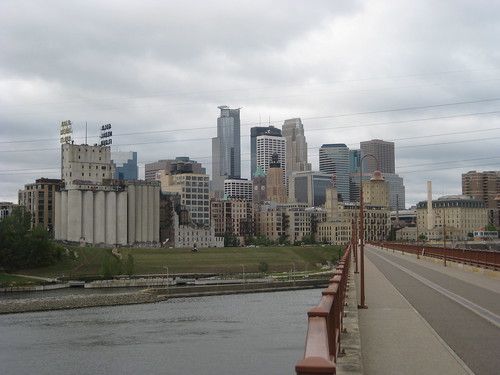
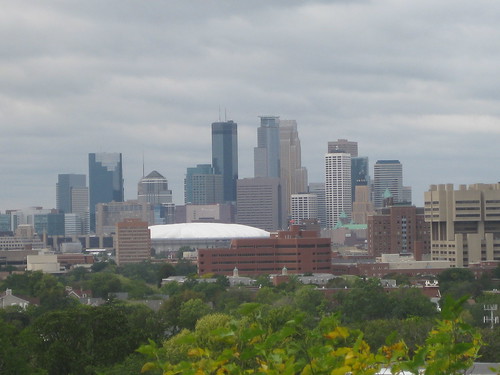
Nicollet Mall (Pedestrian, buses & taxis) with virtually no pedestrians on a Monday morning around 9:30 am. The existence of the skyway system puts a lot of people on the second floors of buildings downtown. This would be excellent for a place such as Hong Kong, but the dual pedestrian grid system just made the downtown feel a bit lonely.
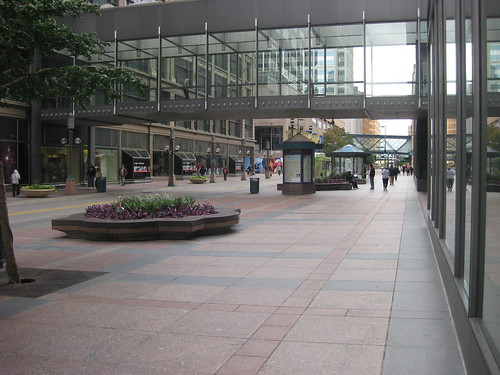
Bus shelter with heating elements

This building always reminded me of broccoli:
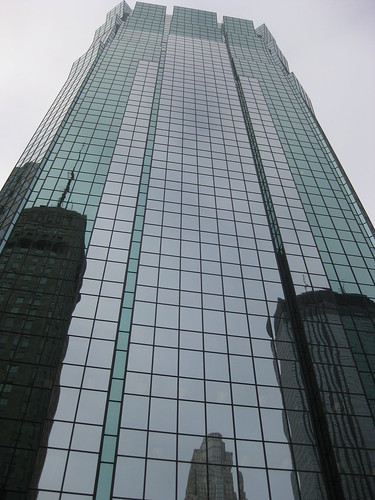

How to build an interesting glass box (cut up the top):
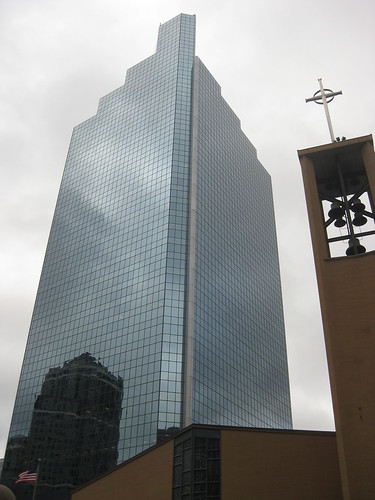
225 South 6th St Building (I love the half halo on top):
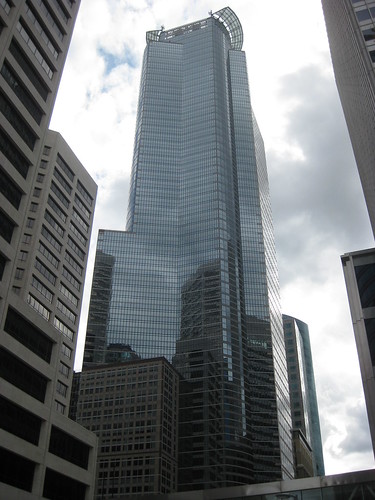

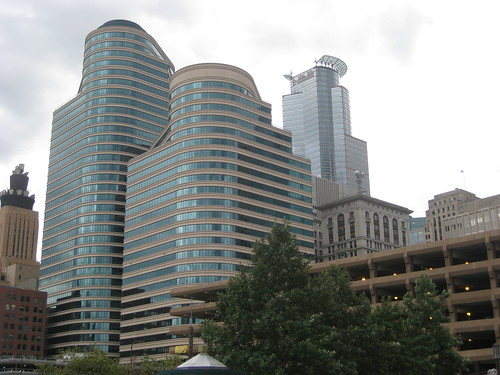
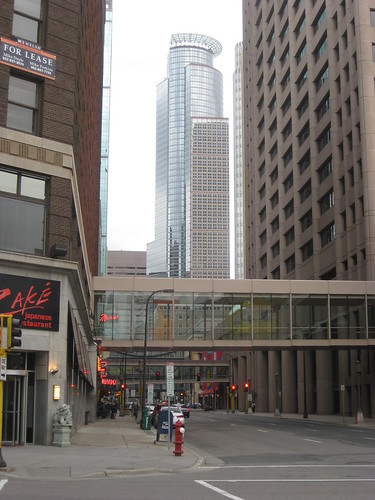
IDS Tower:


with Target Building in the foreground:
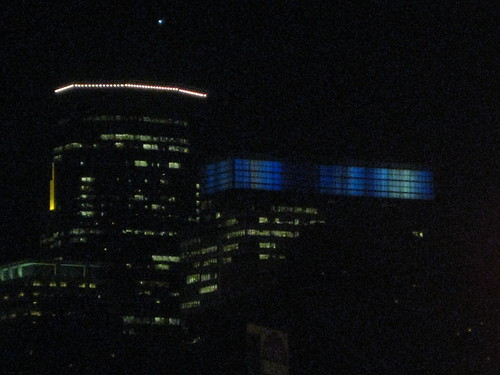
The new downtown central library by Cesar Pelli. It's hard to tell from the photos, but the whitish glass is actually etchings of birch trees on the glass. This felt like a great public space. It is not often that new buildings give me the feeling of entering a place of great importance. This one did. Across the street there was a large parking lot that could turn into a tall residential tower with a much needed grocery store on the main floor.
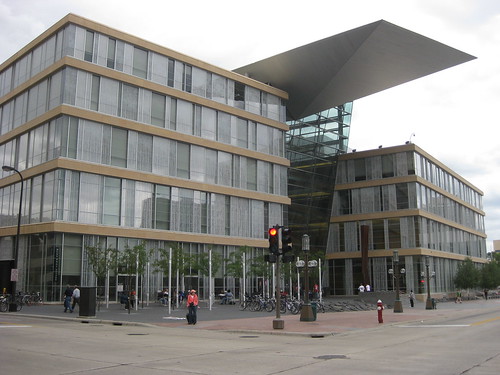

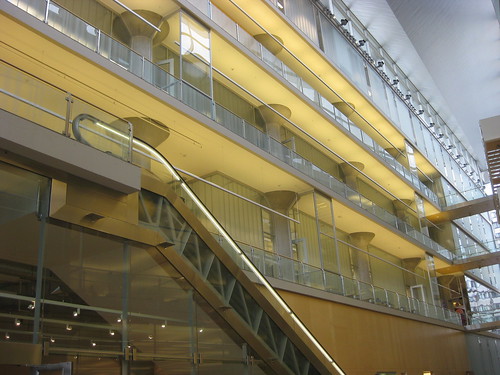

The new Walker Art Center by Herzog & de Meuron. I think it looks like a Barracuda.

It's too bad that it's located right on the highway (it goes underground briefly at this huge intersection where Hennepin and Lyndale Avenues connect):
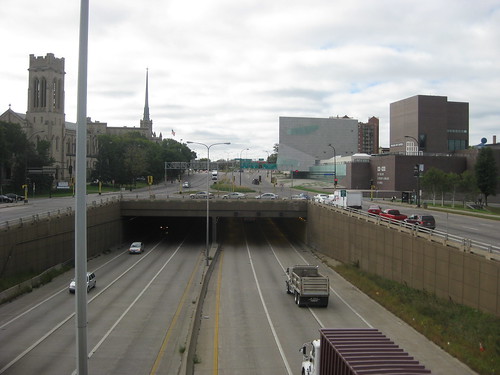
This modern beauty looks good at night:
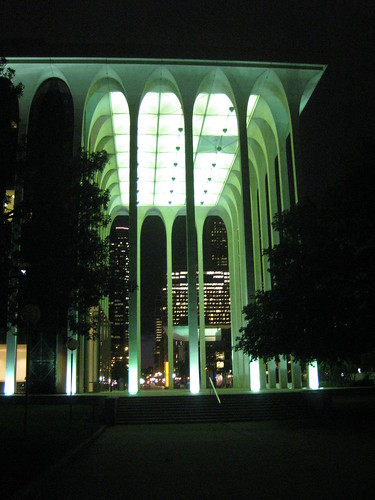
Plaza in downtown across the street from City Hall:
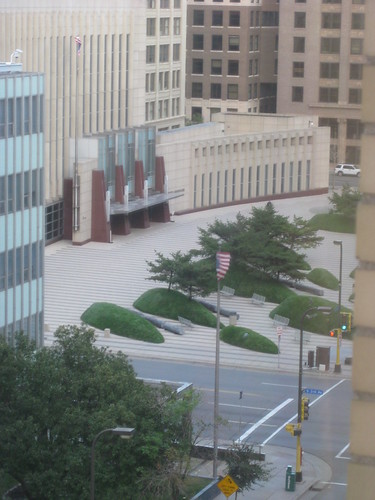
I believe this used to be a government building:
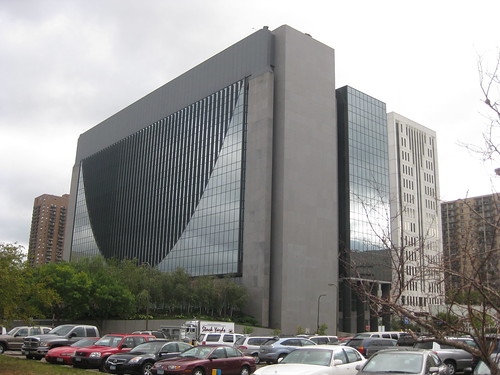
McNamara Alumni Center on U of MN campus (Antoine Predock, architect):
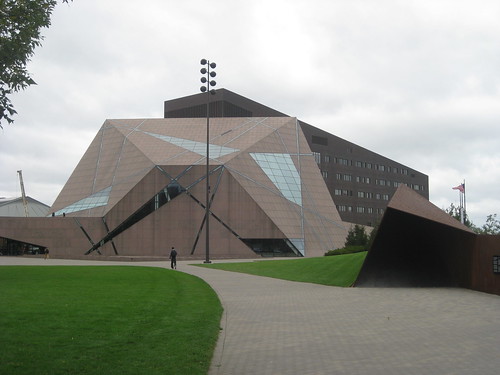
Gehry's Weisman Art Museum on U of MN Campus:

Jean Nouvel's stunning and sharp Guthrie Theater building:
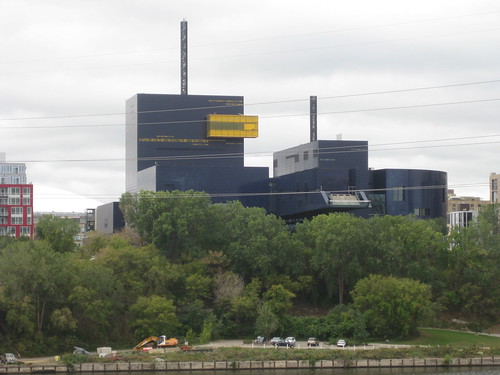
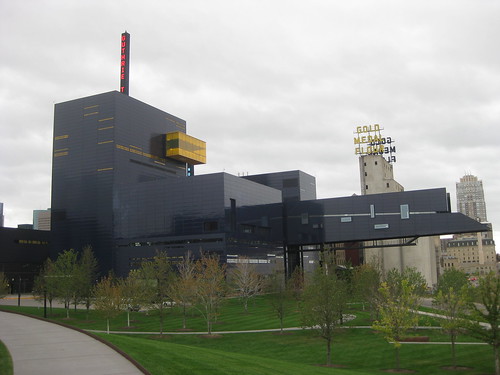
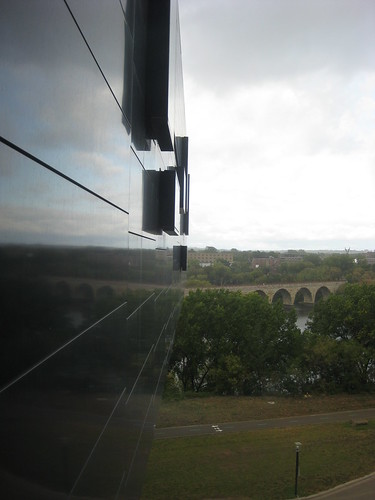
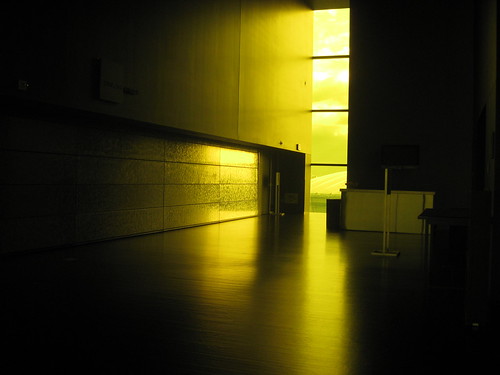
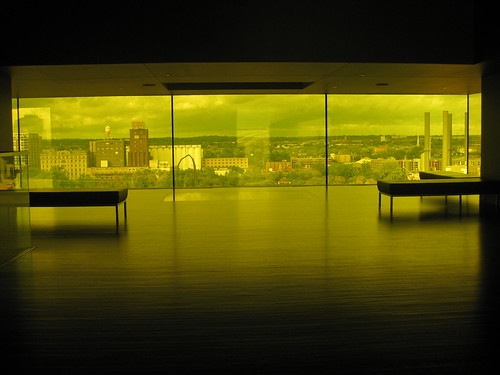
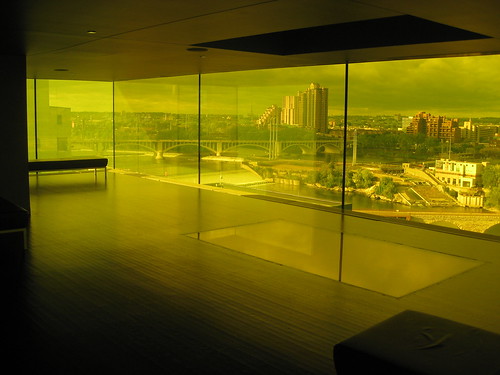
The new park next door, which was fantastic. Minneapolis sure has the magic touch when it comes to creating nice parks.
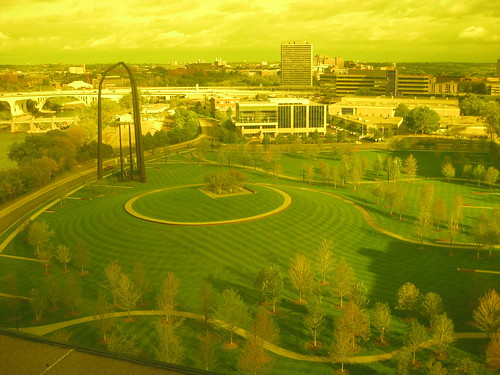
Downtown is almost all one way streets. However, many streets are in the process of being converted to two ways. I recent poll showed about 4-5% of residents commute by bike (2nd highest in US next to Portland). There are bike lanes on major roads going through downtown.
I decided to split the pictures up into new buildings and old buildings. Minneapolis has lots of old great art deco type buildings, but also some good looking glass ones, and a few other oddities thrown in. Part 2 will feature the old ones.
Here are the "new" buildings. (All photos by me)
The skyline from a number of angles:



Nicollet Mall (Pedestrian, buses & taxis) with virtually no pedestrians on a Monday morning around 9:30 am. The existence of the skyway system puts a lot of people on the second floors of buildings downtown. This would be excellent for a place such as Hong Kong, but the dual pedestrian grid system just made the downtown feel a bit lonely.

Bus shelter with heating elements

This building always reminded me of broccoli:


How to build an interesting glass box (cut up the top):

225 South 6th St Building (I love the half halo on top):




IDS Tower:


with Target Building in the foreground:

The new downtown central library by Cesar Pelli. It's hard to tell from the photos, but the whitish glass is actually etchings of birch trees on the glass. This felt like a great public space. It is not often that new buildings give me the feeling of entering a place of great importance. This one did. Across the street there was a large parking lot that could turn into a tall residential tower with a much needed grocery store on the main floor.




The new Walker Art Center by Herzog & de Meuron. I think it looks like a Barracuda.

It's too bad that it's located right on the highway (it goes underground briefly at this huge intersection where Hennepin and Lyndale Avenues connect):

This modern beauty looks good at night:

Plaza in downtown across the street from City Hall:

I believe this used to be a government building:

McNamara Alumni Center on U of MN campus (Antoine Predock, architect):

Gehry's Weisman Art Museum on U of MN Campus:

Jean Nouvel's stunning and sharp Guthrie Theater building:






The new park next door, which was fantastic. Minneapolis sure has the magic touch when it comes to creating nice parks.

